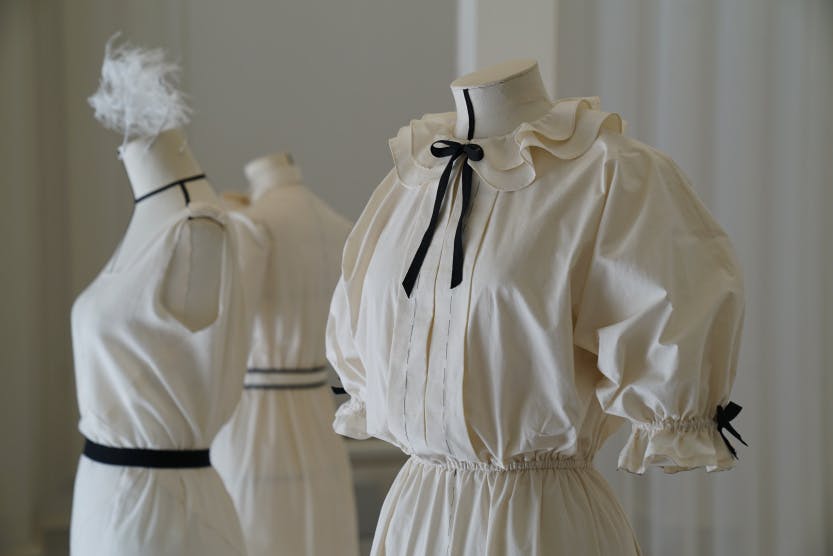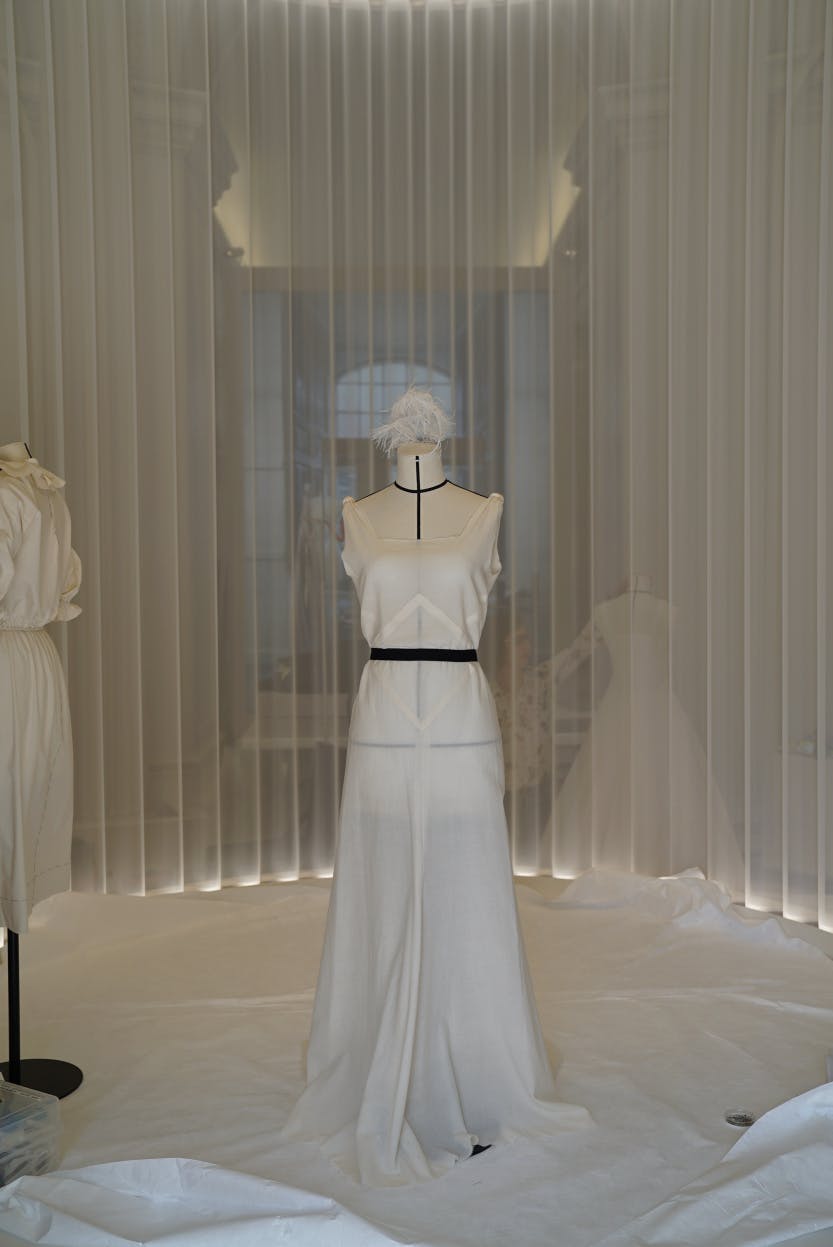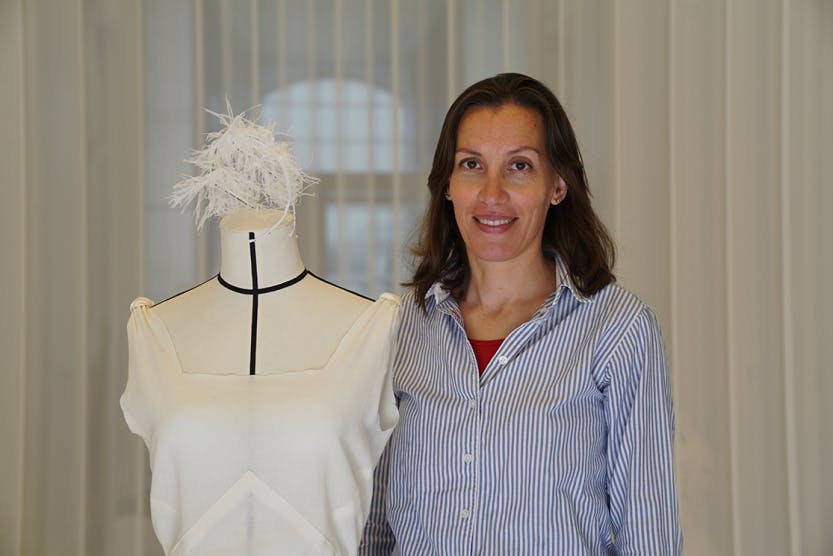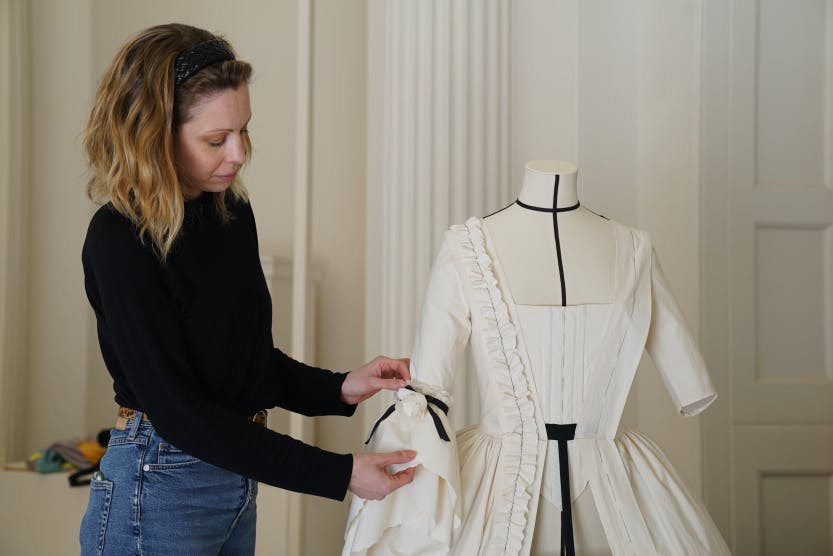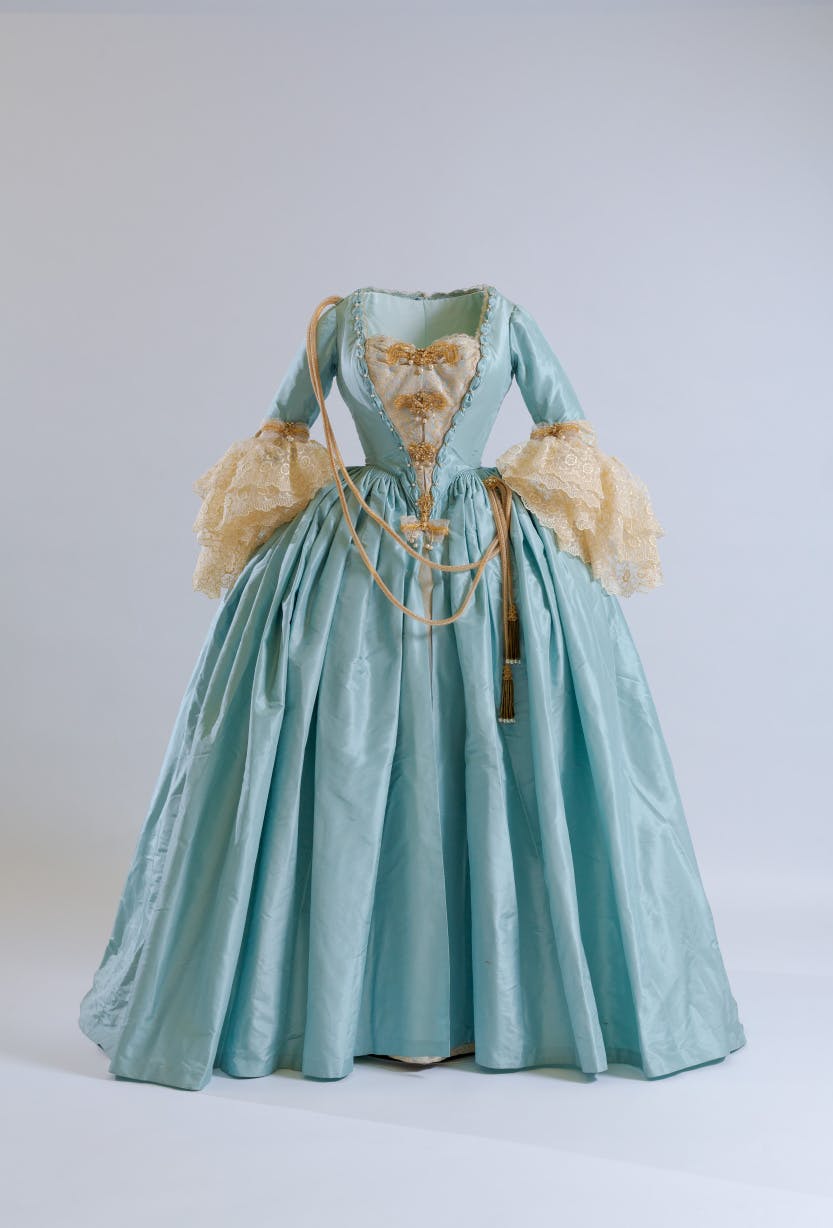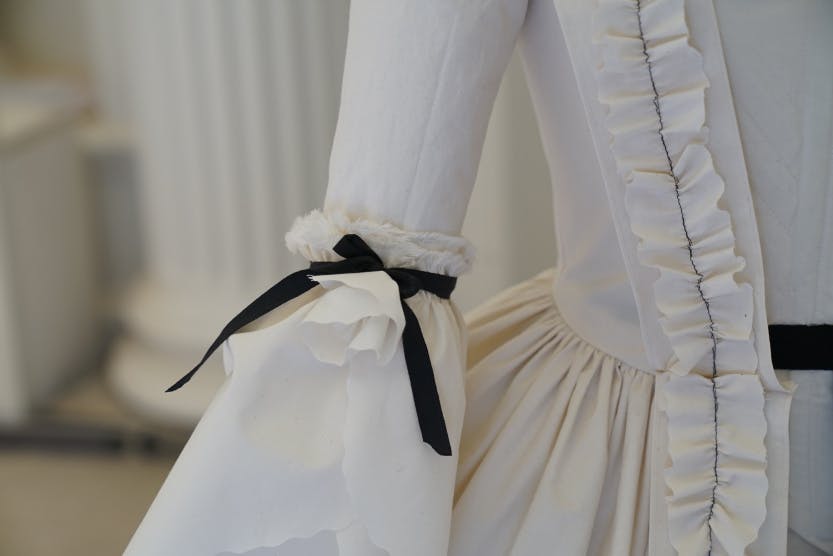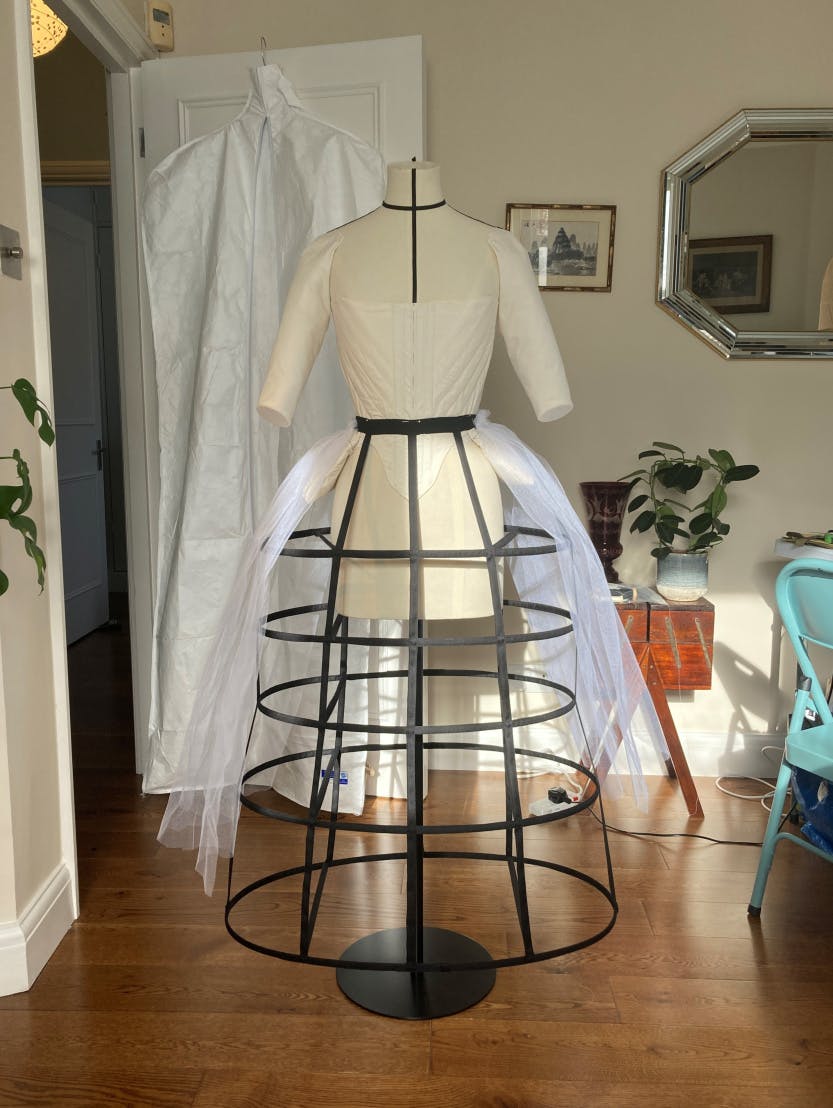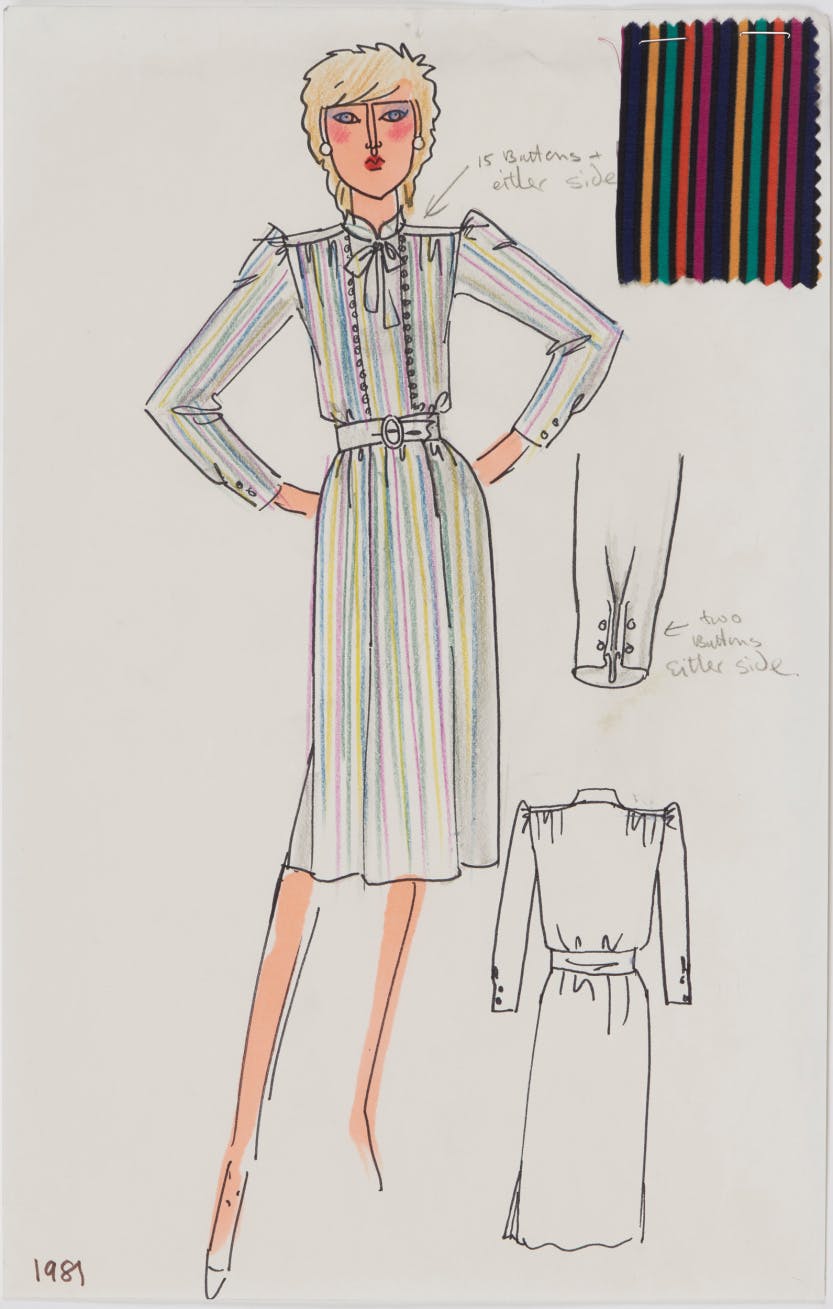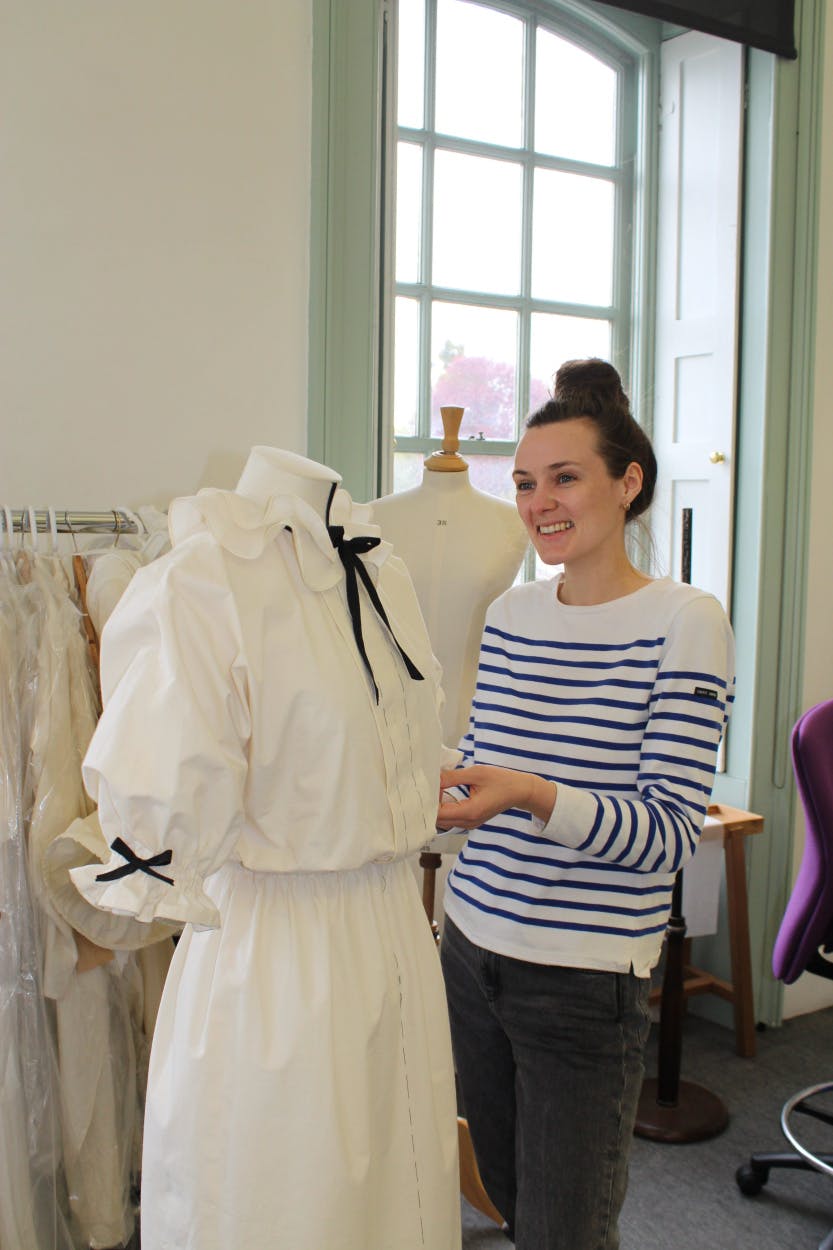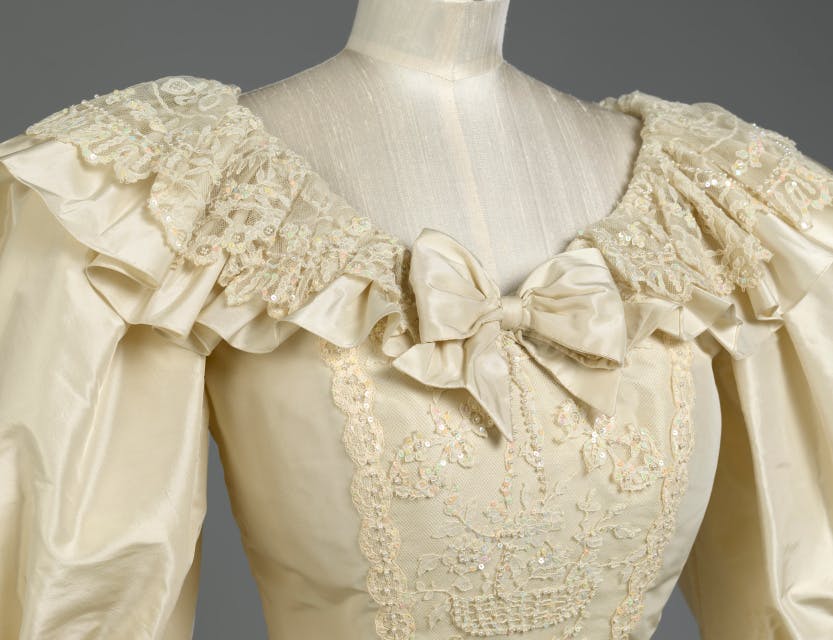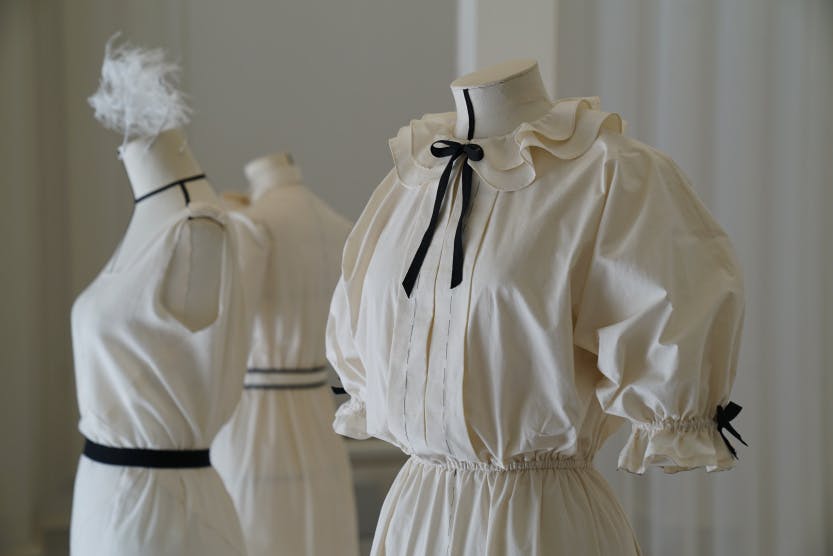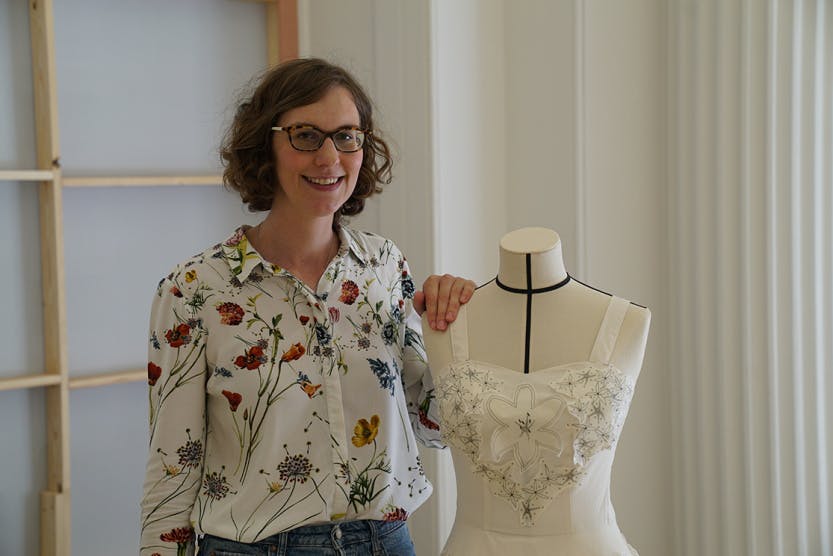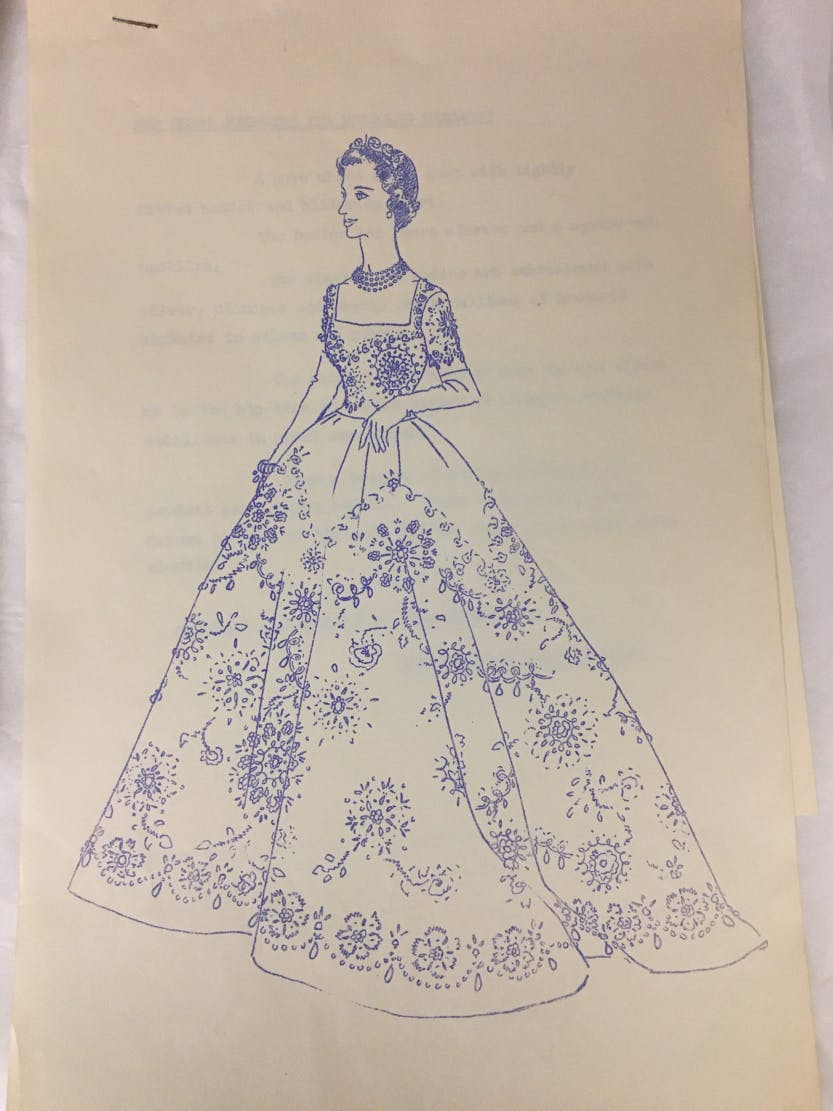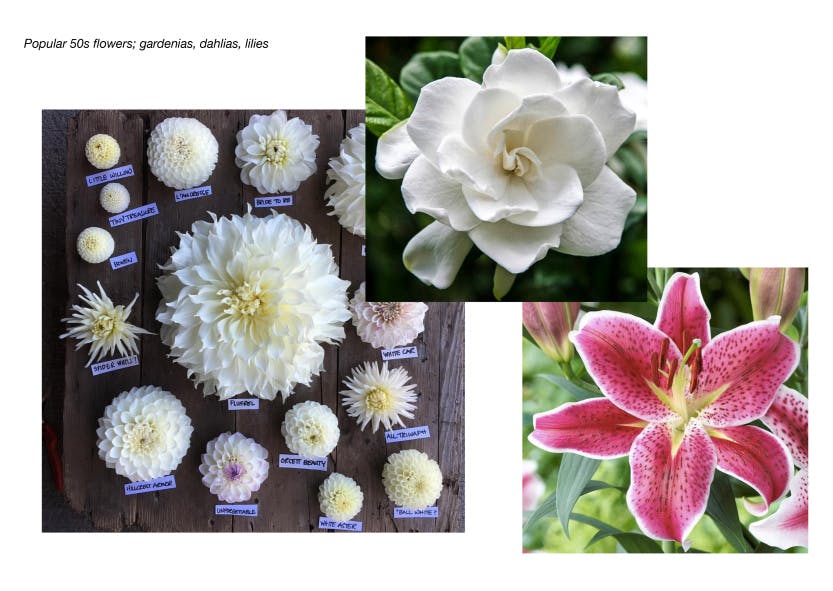Royal Style in the Making: Meet the toile designers
Date: 09 November 2021
Author:
Libby Thompson, Kate Orfeur, Beatrice Farmer, Daisy Graham and Charlotte Gamper
Kensington Palace's exhibition Royal Style in the Making explored the relationship between fashion designer and royal client that led to the creation of some of the most important couture commissions in royal history.
Here, Textile Treatment Supervisor Libby Thompson introduces the collection of toiles - a prototype item of clothing used by designers to test the style and fit of a design - inspired by royal designers which opened the exhibition.
A Textile Conservator's job is never dull. We get up close and personal with some fantastic objects in some fabulous settings. However, up until now when making a toile, it has always been using an historic object as our starting point, as a practical solution to reduce handling of a usually fragile garment. In the Textile Conservation studio at Hampton Court Palace, we have rails of cotton toiles we have made over the years which are exact copies of historic dress in our collections. These are used to reduce handling of an object when it is being prepared for display. This project was therefore new to us, as our brief was to create toiles inspired by the royal designers with a very much 'in progress' feel to help demonstrate this design process. A conservator's job is usually hidden to a certain extent, but here we got free reign to design and create using a slightly different skill set, alongside the fact that we were working remotely from each other from our living rooms during a pandemic!
Below you can hear the voices of each conservator talking about how they came to their designs and their experiences of this process.
Madam Handley-Seymour toile
The toile I created pays homage to the fabulous 1930s, when bias cut* became de rigueur*. Madame Handley-Seymour is a name not well known in the fashion world, but an extensive catalogue of her designs can be found at the V&A. They perfectly illustrate how popular Parisian couture was in the 1930s with her fashion savvy clients. I wanted to capture this, recreating the deceivingly simplistic design, unadorned and almost ethereal.
The sketches gave me a real insight not only into Madame Handley-Seymour's style, but more specifically her court dress designs, of which there were many romantic examples. Using a vintage Vogue pattern as reference, I researched the many little details that every 1930s dressmaker would have instinctively known and implemented, such as seam finishes. Even something as seemingly insignificant as knowing the style of underwear worn was important as it creates a distinctive female form.
The toile has no side seams, the material is entirely cut on the bias*, which is an expensive technique as it uses much more fabric, but these practices combine to create a fluid, graceful shape as it skims and wraps around the body. The geometrical shapes and square neckline give a nod to the art deco influence of the decade.
The light calico* used to make the toile is similar in drape to a silk or crepe de chine which would have been a popular choice for the final dress. I hope I have succeeded in showing visitors to the exhibition an interpretation of Madame Handley-Seymour's rather more daring and fashionable designs of the 1930s, which contrast with her regal designs as distinguished dressmaker to Queen Mary and the Queen Mother. The process was challenging but ultimately very rewarding and I have learned so much from the project. It has certainly given me a new perspective and I can't wait to make more!
Kate Orfeur
Senior Textile Conservator
Messel Toile
My starting point when thinking about an Oliver Messel-inspired toile was the beautiful Georgian-style costume ball dress that he designed for Princess Margaret, displayed in the exhibition.
We have a number of 18th-century dresses within our Royal Ceremonial Dress Collection and I used the style and shape of our Spitalfields mantua bodice as a starting point which I adapted to fit the more modern-shaped mannequin.
Rather than the very wide skirt of this mantua, I simulated more of a robe l'anglais* similar to the Messel design and then added some frills and pronounced sleeve ruffles on one side. I wanted it to look like the designer was playing around with decorations by making it look 'half-finished.
Our curator Matthew sent me a fantastic YouTube video of The Royal Ballet who recreated Messel's designs for their recent production of Sleeping Beauty from which I borrowed a little flower design from a tutu for the sleeve of my dress in homage. To make the dress more theatrical, in line with Messel's work, I came up with the idea of having an exposed crinoline cage petticoat showing through the open front of the skirt. I really wanted to try and achieve something similar to a catwalk look I saw on Instagram from Alexander McQueen's Ready to Wear collection, Spring 2013. I used dress-making steel and black cotton tape sewn into tubing to create my shape, with a little extra net on the hip, to refine the shape of the skirt.
As you can see from my images, much of the work was done from my living room. I'm sure the neighbours wondered what I was doing! It was certainly a unique experience during a quite unsettling time, but it added a new dimension to our work on the exhibition beyond our usual object conservation and mounting for display, allowing us to be creative in a different way and putting us further into the shoes of the designers.
Libby Thompson
Textile Conservation Supervisor of Costume
Sassoon Toile
My toile is inspired by David Sassoon, who is well known as being one of Diana, Princess of Wales favourite designers as part of the Belville-Sassoon fashion label. He helped Diana to develop her evocative style. I first became familiar with the Princess' style when I had the chance to work on the exhibition Diana: Her Fashion Story, which opened in 2017 at Kensington Palace. I was lucky enough to conserve and prepare several of her own dresses for display, including some daywear. The iconic dress and jacket on display in Royal Style in the Making influenced my initial thinking when considering style and shape.
A collection of fashion sketches David Sassoon made for Princess Diana are also featured in the exhibition, recently acquired by Historic Royal Palaces. I trawled these for reoccurring details and noticed that many of the styles included a gathered shoulder and belted waistband. I was particularly inspired by this sketch from 1981 and like to imagine my toile in such a colourful and eye-catching fabric. I also wanted to emulate Sassoon's smart but effortless summer dresses with short sleeves, such as this dress worn to visit the Febem Hostel in Sao Paolo, Brazil, where many of the residents were HIV positive.
I used black thread and cotton tape edging to highlight the construction and included the shoulder pads synonymous with the 1980s. Working on the toile from home was a fun experience, although fending off my cat, who loves to walk around my sewing machine when I'm busy, was something I don't have to contend with in the Hampton Court Palace studio. Sassoon designed some of Princess Diana's most recognisable looks, and I enjoyed spending time trying out some of his techniques.
Beatrice Farmer
Textile Conservator
Emanuel Toile
My toile was inspired by the Emanuel fashion label and, after looking through many images online for research, I decided I really wanted to capture the spirit of their aesthetic from the early 1980s which embody highly feminine aspects of design, such as voluminous sleeves, gathering and ruffles. The wedding dress worn by Diana, Princess of Wales in 1981 was a key inspiration and I wanted to blend aspects of this design with a more casual daywear look. The starting point was a vintage Vogue pattern which provided a good base from which I could adapt and incorporate the key design aspects I wanted. The construction of the dress was fairly straightforward, and I was really happy with the voluminous sleeves, which are three quarter length and elasticated just above the elbow. Due to the volume and stiffness of the fabric, they puff up in a manner reminiscent of the wedding dress.
To create a ruffled effect around the neckline, I adapted the pattern by recutting the collar to add a second layer of fabric and increase the volume which makes it more flounced. I also experimented with different finishes and found that using a rolled hem enhanced this rippling effect and gave the collar much more movement. The final step was to add bows at the neckline and sleeves, echoing the romantic flourishes for which the wedding dress is so famous.
Working from home was a strange experience in a lot of ways, as so much of textile conservation must be done in the studio at Hampton Court where the objects are. However, I did appreciate being able to have multiple cups of tea while I was working (we can't have any food or drink in the studio where there are historic objects!) While it was easy to keep in touch with the team on WhatsApp, I did appreciate being back in the studio for the final stages. Annotated photographs and video calls can only go so far in helping with practical work!
Daisy Graham
Textile Conservation Intern
Hartnell Toile
Creating my Hartnell toile was a truly unique experience. Normally in conservation we aim to be discreet but with this project my work will be out on display for visitors to see. The original Hartnell dress in the exhibition is from the 1930s but my toile is a classic 1950s feminine silhouette with a fitted bodice and wide billowy skirt, held out with petticoats. I drew inspiration from images of Her Majesty the Queen and Princess Margaret from this period and my own experience working on exhibitions showcasing these dresses. Achieving the tailored fit of the bodice was the trickiest task and needed several pattern adjustments and 'pre-toile' toiles to get it right. In the past I have used ready-made sewing patterns, but never had the opportunity to explore how to custom-alter one. I have a newfound respect for pattern cutters and the true mathematical artistry involved in manipulating a flat piece of cloth to fit the complex three-dimensional shape of the human body (and I still have lots to learn!)
My favourite part of the whole project was designing the embroidery pattern for my toile. We are fortunate enough to have some of Hartnell's beautiful original 50s dress illustrations in our collection that helped inspire me, alongside images of his magnificent creations in books and online.
With these references, I created mood-boards that shaped my ideas. I wanted to use flora and fauna in the design and researched popular flowers of the 1950s, choosing lilies, dahlias, jasmine and asparagus fern as the basis of my pattern. Hartnell often used symmetrical repeating shapes and this guided me to create the scalloped detail on the skirt. I hope my inspired pattern sparks a Hartnell tone and helps illustrate a crucial part of the embroidery design process, transferring the drawing to pattern paper and checking its position on the toile, before starting work on the final piece.
Charlotte Gamper
Senior Textile Conservator
Glossary*
- Bias cut/cut on the bias - Material is cut at an angle to the warp and weft of the fabric, to make it hang with a more flowing shape. Popular technique from the 1930s onwards.
- De rigueur - Prescribed or required by fashion, etiquette, or custom.
- Calico - Cheap cotton fabric used to create the toiles.
- Robe a l'Anglaise - Popular dress shape in the 18th century. Fitted bodice with wide overskirt usually parted at the front."
More from our blog

The Real Norman Hartnell: Beyond 'Silver and Gold'
25 February 2022
February is LGBT+ History Month in the UK, which aims to increase the visibility of lesbian, gay, bisexual and trans (LGBT+) people through the exploration of their history and stories. Collections Curator Matthew Storey looks at one such story.

Royal Wetnurses: the 'Foster Mothers' of the Georgian Nursery
24 March 2022
Ahead of Mother's Day, we share the lesser-known histories of the women employed as wetnurses in the Royal Nursery. Taking on the role of 'foster mother' to young princes and princesses, they often developed a close personal bond with the royal family and received mementos that were passed down in families for generations.
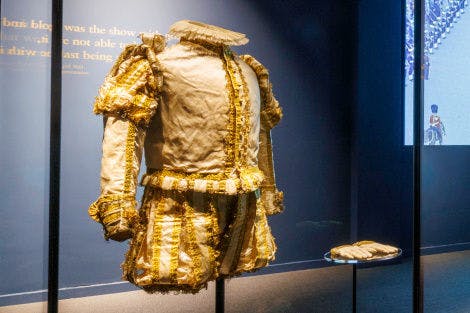
Royal Ceremonial Dress Collection in the Jewel House
26 June 2023
Curator Charles Farris introduces some of the amazing ceremonial dress now on display in the Jewel House exhibition.

